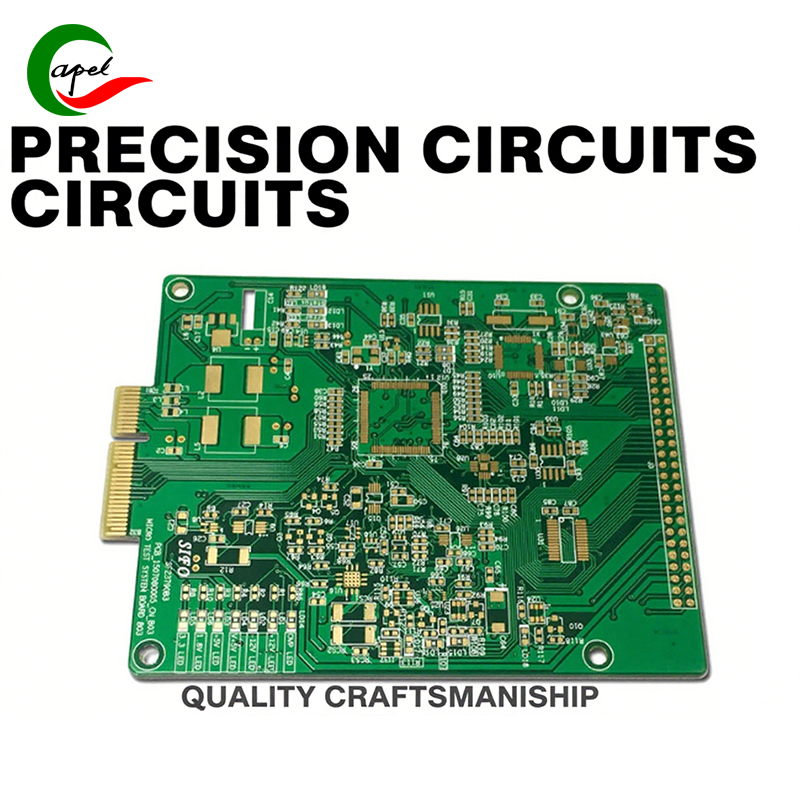Rigid PCBs are the core of high-power devices—you’ll find them in gaming PCs, industrial machines, and electric vehicle (EV) chargers, to name a few. If you’ve ever wondered why these high-power gadgets don’t overheat, a large part of the answer lies in the heat dissipation capability of rigid PCBs. Below, we’ll break down exactly what makes their heat dissipation so effective, and why high-power devices can’t do without them—no confusing jargon, just straightforward explanations.
It’s not “good luck”—rigid PCBs are designed to draw heat away from critical components. They outperform flexible PCBs and other PCB types in heat dissipation for three key reasons:
Rigid PCBs use a thick, sturdy substrate (typically FR-4, a fiberglass-resin composite) with a thickness ranging from 1.6mm to 3mm—far thicker than flexible PCBs (which are only 0.1mm to 0.3mm thick). This thickness offers two advantages:
-
The substrate itself conducts heat more effectively. Think of it like the difference between a thick metal pan and a thin paper plate—the metal pan spreads heat faster, preventing hotspots from forming.
-
It can accommodate thicker copper layers. The copper circuits on rigid PCBs are usually 0.03mm to 0.05mm thick (flexible PCBs only use 0.01mm to 0.02mm thick copper). Thicker copper pulls heat away from heat-generating components (such as CPUs or power chips) more quickly, preventing overheating.
High-power components (like a gaming PC’s CPU or an EV charger’s power module) get extremely hot—too hot for the PCB alone to cool down. The rigidity of rigid PCBs allows them to hold heavy cooling parts that flexible PCBs can’t:
-
Heat sinks: Metal blocks glued or screwed onto the PCB. They absorb heat from hot components and disperse it into the air. For example, the voltage regulator on a desktop motherboard has a small heat sink attached to keep it cool during gaming sessions.
-
Heat pipes or fans: In ultra-high-power devices (such as industrial motors), rigid PCBs can support heat pipes (hollow tubes that transfer heat via liquid) or even small fans. Flexible PCBs would bend or break under the weight of these parts.
High-power devices have numerous components packed closely together. The flat, stable design of rigid PCBs keeps components aligned without overlapping, allowing air to flow between them. Flexible PCBs, by contrast, can fold or crease—trapping heat in narrow gaps. For instance: The battery management PCB in an EV is rigid; its flat layout lets air circulate around power chips, preventing heat buildup that could damage the battery.

High-power devices (those using 50W or more—like gaming PCs, industrial robots, or commercial EV chargers) rely on reliable heat management to function. Here’s why rigid PCBs are non-negotiable for them:
High-power components generate massive amounts of heat—if that heat can’t escape, parts start to fail. Examples include:
-
A gaming PC’s graphics card uses 150W to 300W. Its rigid PCB has thick copper layers and heat sinks that keep the GPU (graphics chip) below 90°C. If a flexible PCB were used here, the thin copper and lack of heat sink support would let the GPU reach 120°C or higher—destroying it in minutes.
-
An industrial laser cutter uses over 500W. Its rigid PCB distributes heat across the board and to attached cooling fans, preventing the laser driver from overheating. A flexible PCB would melt or warp under that level of heat.
High-power devices need to run at full capacity for hours (such as a server operating 24/7). The heat dissipation of rigid PCBs keeps components at a stable temperature, ensuring no performance loss. For example:
-
The motherboard of a data center server is rigid. Its heat dissipation system keeps the CPU between 70°C and 80°C even during nonstop data processing. If the PCB overheated, the CPU would throttle (slow down to cool itself), causing the server to lag.
-
A commercial EV charger uses 10kW to 30kW. The thick copper and heat sinks on its rigid PCB allow it to charge cars quickly for hours without overheating or slowing down.
Heat causes PCBs to degrade over time. The FR-4 substrate and thick materials of rigid PCBs can withstand years of high heat without breaking down. Flexible PCBs, however, have thin polyimide substrates that can crack or become brittle when exposed to constant high heat. For instance:
-
The motor control PCB in a factory operates at 60°C to 70°C every day. A rigid PCB will last 5 to 10 years here. A flexible PCB would start failing in 1 to 2 years, as heat damages its substrate.
You might wonder if flexible PCBs or other types could work—but they fall short in critical areas:
-
Flexible PCBs: Too thin to support thick copper layers or heat sinks, and their substrates can’t withstand high heat. They’re great for small, low-power devices (like smartwatches) but completely useless for devices using 50W or more.
-
Rigid-Flex PCBs: While they have rigid sections, their flexible parts are still too thin to support heavy cooling components. They work for devices that need both flexibility and moderate power (such as some car sensors) but not for fully high-power gear (like gaming GPUs).
The survival of high-power devices depends on their ability to dissipate heat—and rigid PCBs are built for this task. Their thick substrates, ability to support cooling components, and resistance to heat aging make them the only choice for high-power gadgets. Next time you use a gaming PC, charge an EV, or see an industrial machine running, remember: The rigid PCB inside is keeping it from overheating and failing.
related link: